This guide needs to start with a anecdotal caveat – many years ago, I saw a distinguished, doubtless wealthy, gentleman racing his 1920s Bentley at the Silverstone racing circuit. Writ large ’pon the vast, green bonnet, in white letters, was the phrase “Preserve The Earth’s Resources: Build Cars That Last”.
It’s a tricky sentiment with which to argue. After all, a survey in the early 2000s found that, taking manufacturing and shipping emissions into account, the most eco-friendly car in the world was a Jeep Wrangler.
Even today, with advances made in providing car factories with energy from renewable resources, making a car in the first place causes more emissions than it will ever use in its lifetime. So, theoretically, running an ancient Corolla or Escort, and keeping it alive, is actually the most environmentally considerate route to take. Of course, you won’t get any benefit from the taxman for that, and then there’s the argument that eco-cars bought today will be super-eco-friendly in the decades to come.
It’s also worth keeping an eye on residual values for used eco-cars, especially electric ones. Battery life is still an inexact science, and some second-hand values can reflect the fact that there’s an incredible turnover of obsolescence right now. Equally, many hybrid cars end up doing hard labour as taxis and hackneys, so that’s another thing to keep an eye on when buying second hand. With all that in mind, here’s our guide to the best cars you can buy for every budget which will save you at the pumps, at the accountants’, and at the mercy of your conscience.
The small one: Toyota Yaris Hybrid
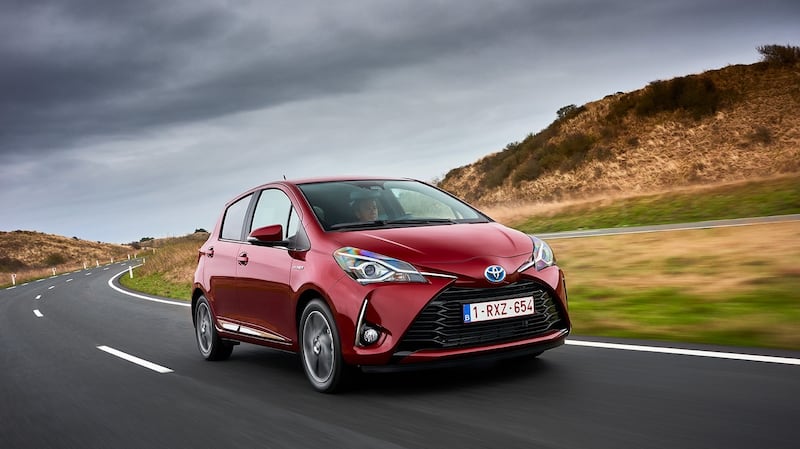
The early versions of the Yaris Hybrid were truly horrid to drive, and became incredibly thirsty if you dared take them anywhere near a motorway. Happily, the Yaris as a whole, and the Hybrid in particular, is much improved these days and it will still return decent fuel economy on longer journeys, even if its natural habitat is still in town.
Now, what you deem to be decent fuel economy may vary – generally speaking we consider it job done if we squeeze 50mpg on average out of a Yaris Hybrid, which is a long way from the quoted 86mpg combined figure. At least the saintly 75g/km Co2 figure is taken as given, and there’s nothing wrong with either the cabin quality nor space. Not much fun to drive, but it is exceptionally refined around town. Pricey, though it does at least come with a CVT automatic as standard.
Price: From €18,650.
Co2: 75g/km.
Economy: 3.2l/100km or 86mpg (claimed).
Worth trying: Reanult Zoe. Price: €23,490 to €29,990. Co2: 0g/km. Electric range: 240-400km (claimed). Updated Zoe gets a bigger battery and hugely impressive electric powertrain, but you need to spend big to get the 400km range version, and it's small inside.
Used option: Honda Insight. 2010-2014. Price: From circa €5,500 used. Co2: 105g/km. Economy: 4.6l/100km or 61mpg (claimed). Super-cheap to buy, well-made, reliable, and not bad to drive.
The family one: Hyundai Ioniq
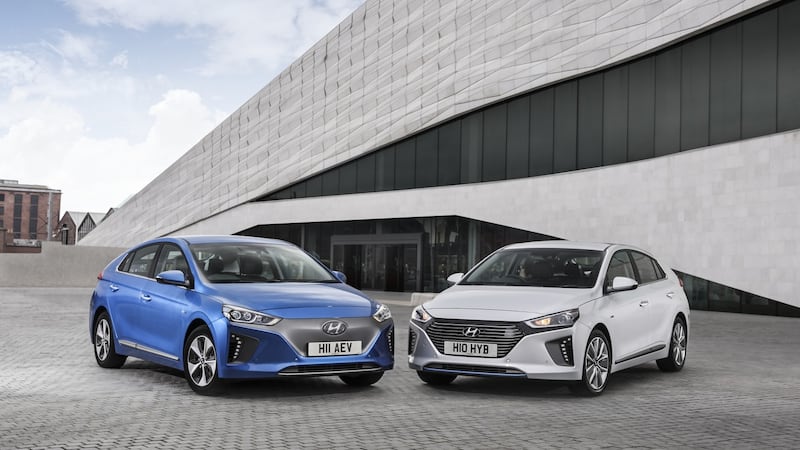
The Ioniq is a car we really shouldn’t like, mostly because it is entirely no fun to drive. The steering is as light as whipped cream, the suspension as soft as fresh muffin and the handling about as sharp as a lump of old wood. It trundles along alright, but it’s not entertaining in the least. Why do we like it, then? Because it’s one of the first electric cars that you really can use every day, with a realistic 200km driving range on one charge, a roomy and practical (and very well-made) cabin and styling that, while following the teardrop planform similar to most eco-vehicles, actually looks pretty Okay.
We also like the copper-coloured highlights on the electric model, and for those not yet willing to take the full electric plunge, there is the option of either a conventional hybrid or a plugin one. Clever heating system allows you to warm up the car but then switch off the heater to help preserve range, while the infotainment system is pretty good too.
Price: From €28,495.
Co2: 0-92g/km.
Economy: 3.4l/100km or 83mpg (claimed).
Electric range: 280km (claimed).
Worth trying: Volkswagen eGolf. Price: TBC. Co2: 0g/km. Electric range: 300km (claimed). We need to try the new electric Golf here at home yet, but all the signs are that it's going to be hugely impressive. Still a Golf, but with zero-guilt.
Used option: Nissan Leaf. 2010-today. Price: From circa €58,500 used. Co2: 0g/km. Electric range: 160km (claimed). The pioneer mass-market electric car. Roomy, but interiors get rattly and early models are very short-ranged, even if their batteries are in perfect nick.
The spacious one: Toyota Prius
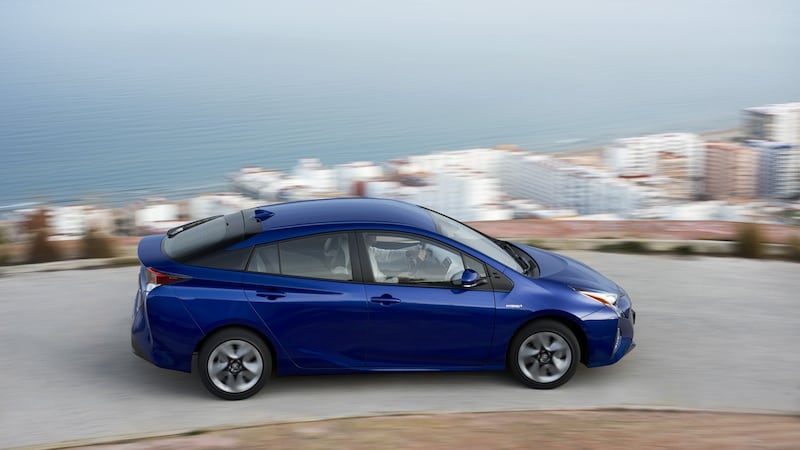
It may well be the most predictable choice around, but the Prius, two decades on from the introduction of the first model, is really starting to make a compelling case for itself. Okay, so the styling has morphed from anonymous to jaw-droppingly ugly, but you certainly can’t claim that it’s uninteresting anymore. Inside, the cabin quality is exceptionally high, there’s plenty of space, and good levels of equipment. It’s comfy too.
It’s also very, very refined, even at motorway speeds as Toyota has worked very hard on silencing the drone from the CVT gearbox, and longer journeys, which used to destroy your fuel economy, now regularly see you on the sunny side of 60mpg. Incoming Plugin Hybrid version claims 22g/km and a whopping 282mpg, but it’s not cheap.
Price: From €31,450.
Co2: 22-76g/km.
Economy: 1.0 to 3.3l/100km or 282 to 85mpg (claimed).
Electric range: 62km (claimed – Plugin version only).
Worth trying: Mitsubishi Outlander PHEV. Price: From €49,900. Co2: 42g/km. Economy: 1.9l/100km or 176mpg. Electric range: 52km (claimed). Big and useful, the Outlander PHEV is also rather handsome, and not bad to drive. Great around town but economy takes a huge hit on longer journeys – 35mpg on the motorway!
Used option: Volkswagen Passat 1.6 TDI Bluemotion. 2005-2014. Price: From circa €8,000 used. Co2: 109g/km. Economy: 4.1l/100km or 68mpg (claimed). We know diesel is now the devil, and it was VW that gave it horns and a forked tail. Still, an easily-achieved 60mpg is hard to argue with. Galway to Glasgow and back on one tank.
The sporty one: BMW i3 94Ah
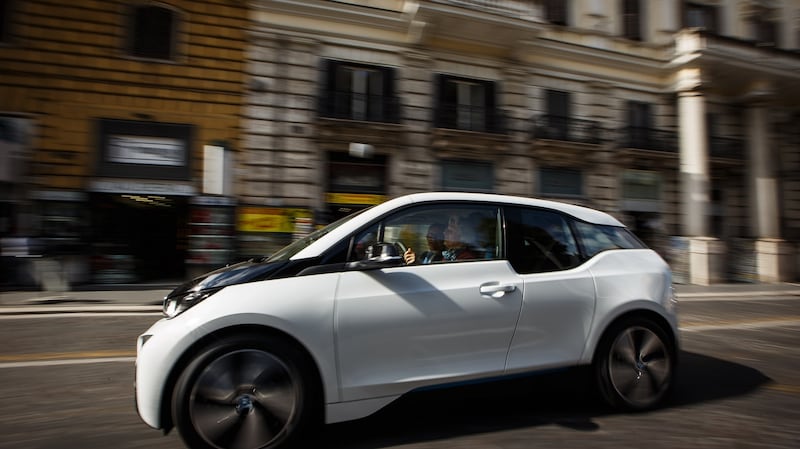
One thing needs to be established right from the get-go; the BMW i3 is, if you take into account its overall size, its spaciousness, and it’s performance, staggeringly expensive. Yes, there are some cheap deals around for PCP finance on one, but even so, you’re looking at spending the thick end of €55,000 on a car with the cabin space of a Mini Clubman. And not the new, more spacious Clubman either. Still, you are getting something a bit special for your money. A family hatch with a pair of rear-hinged doors, a carbon-aluminium chassis and the chance to go for 300km on just the batteries? How cool is that?
Almost as cool as the i3's rolled-of-the-set-of-Star-Wars styling, not to mention the gorgeous, almost Scandinavian vibes of the cabin. Best model is the range-extender, with its emergency two-cylinder petrol motor, which adds around 100-120km to the electric range and which will get you home if you run out of juice miles from a socket. It's also really good fun to drive, with fast steering and terrific low-down acceleration. Similarly-priced part-electric 330e plugin is a more conventional alternative.
Price: From €37,180.
Co2: 0-13g/km.
Economy: 0.6l/100km or 470mpg (claimed).
Electric range: 202-332km (claimed).
Worth trying: Lexus IS300h. Price: From €39,950. Co2: 97-107g/km. Economy: 4.2l/100km or 67mpg (claimed). Dramatic styling and a beautifully made cabin make the I300h desirable, reliability and decent real-world economy make it a great purchase.
Used option: Mercedes-Benz C300 Hybrid. 2014 to today. Price: From circa €40,000 used. Co2: 94g/km. Economy: 3.5l/100km or 78mpg (claimed). Merc's part-diesel hybrid sips fuel, and can run silent around town. Savage depreciation means that they can lose as much as €20,000 in their first year, so buying used makes sense.
The executive one: Lexus GS300h
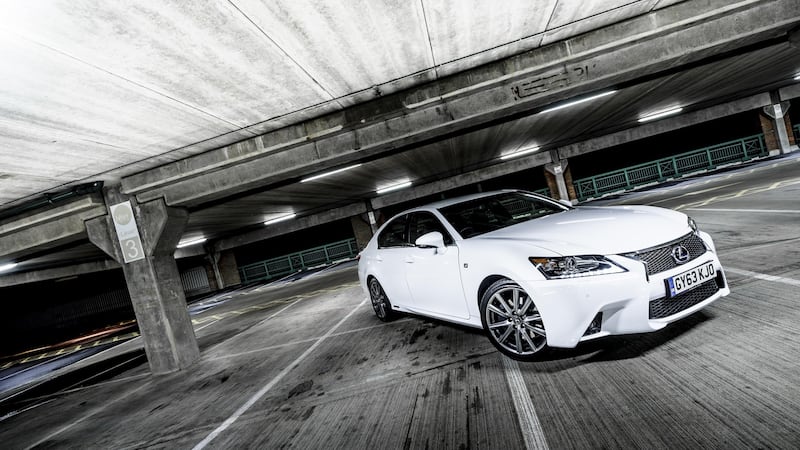
There are many criticisms that you can hurl at the Lexus GS300h. It looks like a posh Camry. Its infotainment system looks five years out of date. It’s far too soft around corners to keep up with a BMW 5 Series or Jaguar XF. All true, doubtless, but then they do tend to overlook the fact that the GS is a car built around its hybrid drivetrain.
The larger-engined V6 GS450h has its hot-rod charms, no question, but it’s a touch too thirsty to do duty as a true eco-warrior. The four-pot GS300h, by contrast, is all about the soothing. It has soothing silence on a long journey, soothing seats that are – genuinely – better than anything Bentley makes. Soothing economy too; this big, sporty(ish) exec saloon can return the same real-world average as a 2.0 diesel Mondeo. It’s also massive in the back, and the reshaped battery pack means there’s now a decent boot too.
Price: From €53,450.
Co2: 106-115g/km.
Economy: 4.5l/100km or 62mpg (claimed).
Worth trying: BMW 530e iPerformance. Price: From €55,900. Co2: 46g/km. Economy: 2.0l/100km or 141mpg (claimed). Beautifully refined and with cutting-edge tech, but the plugin 5 suffers from plummeting economy on longer motorway runs.
Used option: Mercedes-Benz E300 Hybrid. 2010 to 2016. Price: From circa €24,000 used. Co2: 107g/km. Economy: 4.1l/100km or 68mpg (claimed). Bigger brother to the C300 hybrid, uses the old 2.1 diesel engine and gets great economy around town. Masses of space in the back too, but watch for ex-taxis.
The SUV one: Audi Q7 e-Tron Hybrid
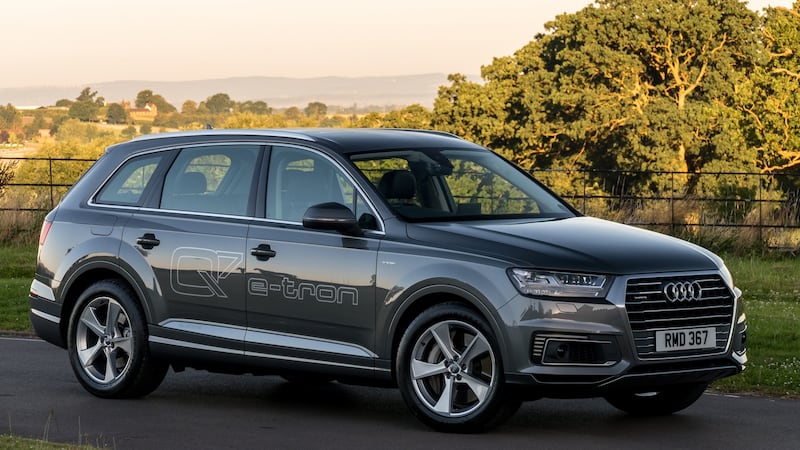
The combination of a big diesel engine and a hybrid drive is generally considered as undesirable, because both diesel and electric power are expensive to design and develop, so you’re doubling down on your costs all the way. Besides, diesel is so passé now, no? Well, no, not if you’re driving a Q7 e-Tron which combines a lusty 3.0-litre diesel V6 engine and an electric motor for some pretty impressive performance.
The fact that its a big diesel means that you can still squeeze decent economy out of it on a long run, while the plugin-hybrid module means that you can glide around town in electric silence for as much as 56km. Plus, you get the usual Q7 attributes of a terrific cabin (gorgeous and well made) and lots of space, although you do lose the seven-seat option, as the batteries take up the necessary space.
Price: From €83,625.
Co2: 48g/km.
Economy: 01.9l/100km or 149mpg (claimed).
Electric range: 56km (claimed).
Worth trying: Tesla Model X. Price: From €107,591. Co2: 0g/km. Electric range: 417 to 565km (claimed). The car of the moment? Gullwing doors, seven seats, massive touchscreen, and blistering performance all amaze. Poor cabin quality and lumpy ride unbecoming of the price tag.
Used option: Lexus RX450h. 2008 to 2012. Price: From circa €19,000 used. Co2: 145g/km. Economy: 6.4l/100km or 44mpg (claimed). Third-gen RX is calming and relaxing to drive, and has impressive Co2 emissions for a decade-old SUV design. Roly-poly handling best kept in town, though.
The luxury one: Tesla Model S
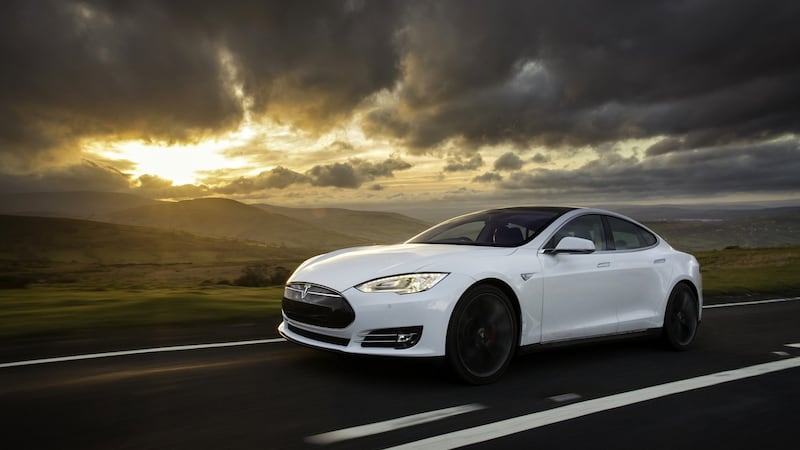
The thing that grabs you most about the Model S is just how normal it all seems after a while. How normal it seems to be able to drive from Dublin to Cork in one hit in an electric car. How normal it is to have a big, luxury saloon with an (optional) extra pair of seats in the boot for the kids. How normal it is to have a touchscreen bigger than any telly we had when I were a lad. How normal it is to keep pace with a 911 Turbo up to 100kmh. How normal electric motoring suddenly becomes.
Of the two Tesla models currently on sale, the Model S is by far the better sorted, with a much better handling and ride balance than the Model X SUV, and it seems to suffer from fewer interior rattles too. Not cheap, but then nothing in this class gets close for kerbside appeal right now.
Price: From €86,102.
Co2: 0g/km.
Electric range: 490-632km (claimed).
Worth trying: BMW 740e iPerformance. Price: From €99,330. Co2: 49-56g/km. Economy: 2.1l/100km or 134mpg (claimed). Electric range: 50km (claimed). Slinky Seven makes a great part-electric car (whisper it, with a four-cylinder engine) and can still be fun to drive. Perfect for city-centre movie premieres.
Used option: Porsche Panamera Hybrid S. 2011 to 2013. Price: From circa €60,000 used. Co2: 159g/km. Economy: 7.2l/100km or 39mpg (claimed). First-gen Panamera not to all tastes, but hybrid system works well and it's still surprisingly agile.
The fast one: BMW i8
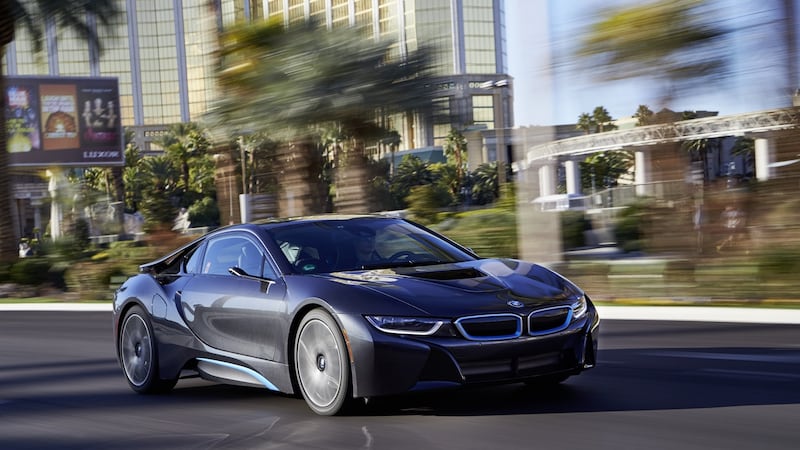
BMW really pulled out the styling stops for its i8, giving it the appearance of a car that had rolled straight from the motor show stage into your local dealership, with no stopping off at the pesky accountant’s office. What’s surprising, really, is how usable it is – kids can squeeze into the back seats, and in spite of those dramatic doors, it’s not too hard to get in and out.
Fitting the tiny, three-cylinder turbo engine from a Mini Cooper might give some the impression that the i8 is lacking in thrust, but the combo of engine and electric motors means it’s actually pretty fleet, if not quite Ferrari-fast. Agile and engaging to drive, the weight of the batteries means that it can be a touch snappy on the limit, but to find another car with a carbon chassis, trick doors, and hybrid drive, you’ll have to upgrade to a McLaren costing four times as much. And the McLaren won’t average a genuine 50mpg on the road.
Price: From €152,720.
Co2: 49g/km.
Economy: 2.1l/100km or 147mpg.
Electric range: 50km (claimed).
Worth trying: Lexus LC500h. Price: From €TBA. Co2: TBAg/km. Economy: Circa 40mpg (claimed). Lexus new big coupe arrives later this year, and combined the usual hybrid eco-friendliness with stunning styling and a peachy chassis.
Used option: Lotus Evora 400. 2016 to today. Price: From circa €90,000 used. Co2: 225g/km. Economy: 9.7l/100km or 29mpg (claimed). Light and lithe Lotus makes the most of its Toyota V6 engine. Hardly super-frugal, but not bad by high performance standards.












